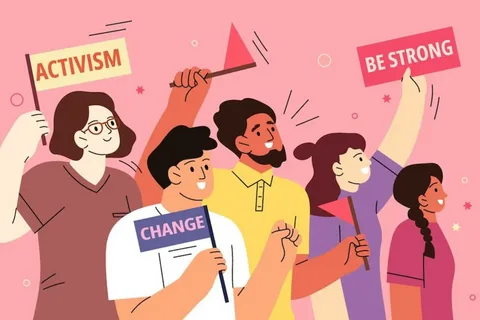The Power of Activism: Driving Change in Society

Activism is the practice of taking action to bring about social or political change. It has been a driving force behind many of the world’s most significant advancements in human rights, environmental protection, and social justice. Whether through protests, advocacy, or community organizing, activism empowers individuals and communities to raise their voices and demand change.
Historical Context
Throughout history, activism has played a crucial role in shaping societies. Movements like the civil rights movement in the United States, the anti-apartheid struggle in South Africa, and the women’s suffrage movement have showcased the power of collective action. These movements often faced significant opposition, yet their perseverance led to substantial changes in laws and societal norms.
Forms of Activism
Activism can take many forms, including:
-
Protests and Demonstrations: Large gatherings to express solidarity or dissent. Notable examples include the Women’s March and the Black Lives Matter protests.
-
Advocacy: Lobbying for policy changes, often involving meetings with lawmakers and organizing campaigns to influence public opinion.
-
Digital Activism: Utilizing social media platforms to raise awareness, mobilize supporters, and share information rapidly.
-
Community Organizing: Building grassroots movements that empower local communities to address their specific needs.
-
Artistic Expression: Using art, music, and literature to communicate messages and inspire action.
The Role of Technology
In the digital age, technology has transformed the landscape of activism. Social media allows for the rapid dissemination of information, making it easier to mobilize support and raise awareness. Hashtags like #MeToo and #ClimateStrike have united individuals across the globe, demonstrating the potential of online platforms to catalyze real-world change.
However, technology also presents challenges, such as misinformation and the potential for online activism to replace traditional forms of engagement. Striking a balance between online and offline efforts is crucial for effective activism.
The Importance of Inclusivity
Successful activism is often rooted in inclusivity. Movements that represent diverse voices are more likely to resonate with a broader audience and achieve meaningful change. Intersectionality—a term coined by Kimberlé Crenshaw—emphasizes the interconnected nature of social categorizations and highlights the need to consider various identities and experiences in activism.
Challenges Faced by Activists
Activism is not without its challenges. Activists often face backlash from those in power, including legal repercussions, harassment, and violence. The recent rise of authoritarianism in various parts of the world has made it even more perilous for individuals to speak out.
Furthermore, burnout is a common issue among activists, as the emotional toll of advocating for change can be overwhelming. It’s essential for activists to practice self-care and support one another to sustain their efforts over time.
Moving Forward
As we look to the future, the need for activism remains critical. Climate change, social inequality, and human rights violations continue to pose significant challenges globally. Engaging young people, fostering community solidarity, and leveraging technology will be essential in mobilizing efforts for change.
In conclusion, activism is a powerful tool for societal transformation. By uniting individuals around shared goals and advocating for justice, activists have the potential to reshape the world. Whether through large-scale movements or local initiatives, every action counts in the quest for a more equitable and just society.
- Arts
- Business
- Computers
- Spellen
- Health
- Home
- Kids and Teens
- Money
- News
- Recreation
- Reference
- Regional
- Science
- Shopping
- Society
- Sports
- Бизнес
- Деньги
- Дом
- Досуг
- Здоровье
- Игры
- Искусство
- Источники информации
- Компьютеры
- Наука
- Новости и СМИ
- Общество
- Покупки
- Спорт
- Страны и регионы
- World


